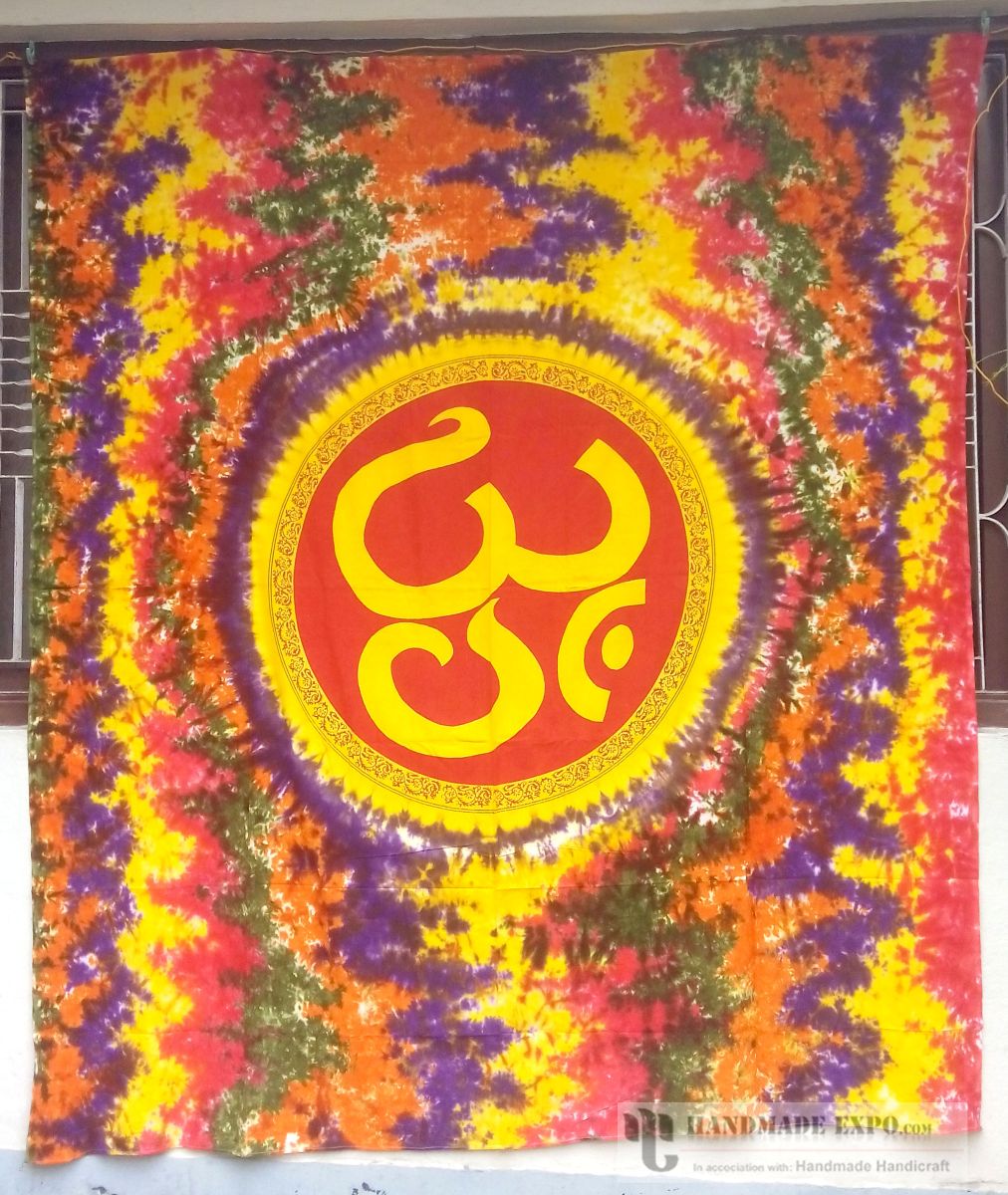Bed Sheet
Cotton bed sheets with various gods of Hindu and Buddhist and animal prints are a unique and beautiful choice for those who want to add a touch of spirituality and culture to their bedroom decor. These bed sheets are made from high-quality cotton, which is soft, breathable, and comfortable to sleep on.
The prints on these bed sheets often feature images of gods and goddesses from Hindu and Buddhist traditions, such as Ganesha, Shiva, Buddha, Tara, and many others. These prints may also include animals that are considered sacred or symbolic in these traditions, such as elephants, peacocks, or dragons. The prints are often intricate and colorful and can add a sense of reverence and spirituality to the room.
Read More
In addition to their aesthetic appeal, these bed sheets can also serve as a reminder of one's spiritual practices and beliefs. They can be a comforting and grounding presence in the bedroom, helping to promote a sense of peace and mindfulness.
Cotton bed sheets with various gods of Hindu and Buddhist and animal prints are a wonderful way to bring culture and spirituality into the home, and make a meaningful and unique addition to any bedroom.
OM - Hindu : About OM
It is the most sacred syllable symbol and mantra of Brahman, the Almighty God in Hinduism. Brahman is the Supreme Self, Ultimate Reality, and Creator of all Existence. The syllable is often chanted either independently or before a mantra; it signifies the essence of the ultimate reality, consciousness, or Atma. The Om sound is the primordial sound and is called the Shabda-Brahman (Brahman as sound). In Hinduism, Om is one of the most important spiritual sounds. It refers to Atman (soul, self within) and Brahman (ultimate reality, entirety of the universe, truth, divine, supreme spirit, cosmic principles, knowledge). The syllable is often found at the beginning and the end of chapters in the Vedas, the Upanishads, and other Hindu texts. It is a sacred spiritual incantation made before and during the recitation of spiritual texts, during puja and private prayers, in ceremonies of rites of passage (sanskara) such as weddings, and sometimes during meditative and spiritual activities such as Yoga. Om came to be used as a standard utterance at the beginning of mantras, chants, or citations taken from the Vedas. For example, the Gayatri mantra, which consists of a verse from the Rigveda Samhita (RV 3.62.10), is prefixed not just by Om but by Om followed by the formula bh?r bhuva? sva?. Such recitations continue to be in use in Hinduism, with many major incantations and ceremonial functions beginning and ending with Om. Maheshwarananda (2002) suggests that the Om reflects the cosmological beliefs in Hinduism, as the primordial sound associated with the creation of the universe from nothing.
Detail Description
The syllable Om is referred to as praṇava. Other used terms are akṣara (literally, letter of the alphabet, imperishable, immutable) or ekākṣara (one letter of the alphabet) and omkāra (meaning literally
"Om syllable", and connoting: a beginning and female divine energy). Udgitha, a word found in Sama Veda and bhasya (commentaries) based on it, is also used as a name of the syllable. The word has three phonemes: "a-u-m", though it is often described as trisyllabic despite this being either archaic or the result of translation.
The syllable Om is first mentioned in the Upanishads, the mystical texts associated with the Vedanta philosophy. It has variously been associated with concepts of "cosmic sound" or "mystical syllable" or "affirmation to something divine", or as symbolism for abstract spiritual concepts in the Upanishads. In the Aranyaka and the Brahmana layers of Vedic texts, the syllable is so widespread and linked to knowledge, that it stands for the "whole of Veda". The etymological foundations of Om are repeatedly discussed in the oldest layers of the Vedantic texts (the early Upanishads). The Aitareya Brahmana of Rig Veda, in section 5.32, for example suggests that the three phonetic components of Om (pronounced AUM) correspond to the three stages of cosmic creation, and when it is read or said, it celebrates the creative powers of the universe. The Brahmana layer of Vedic texts equate Om with Bhur-bhuvah-Svah, the latter symbolizing "the whole Veda". They offer various shades of meaning to Om, such as it being "the universe beyond the sun", or that which is "mysterious and inexhaustible", or "the infinite language, the infinite knowledge", or "essence of breath, life, everything that exists", or that "with which one is liberated". The Sama Veda, the poetical Veda, orthographically maps Om to the audible, the musical truths in its numerous variations (Oum, Aum, Ovā Ovā Ovā Um, etc.) and then attempts to extract musical meters from it.
The syllable Om evolves to mean many abstract ideas in the earliest Upanishads. Max Müller and other scholars state that these philosophical texts recommend Om as a "tool for meditation", explain various meanings that the syllable may be in the mind of one meditating, ranging from "artificial and senseless" to "highest concepts such as the cause of the Universe, essence of life, Brahman, Atman, and Self-knowledge".
Read More
